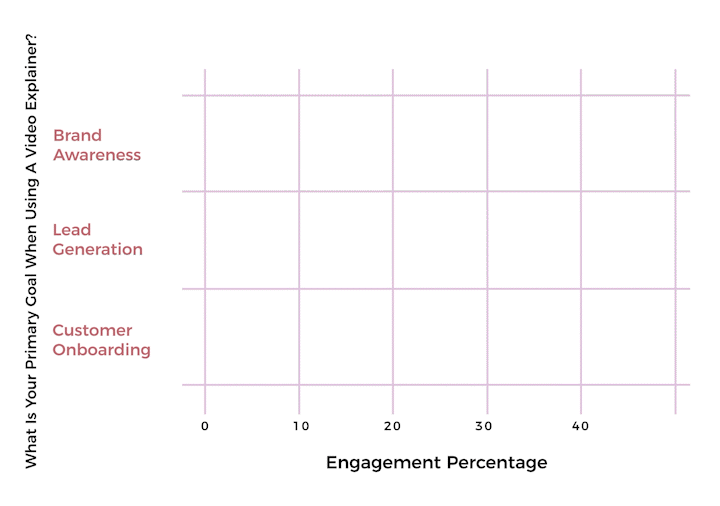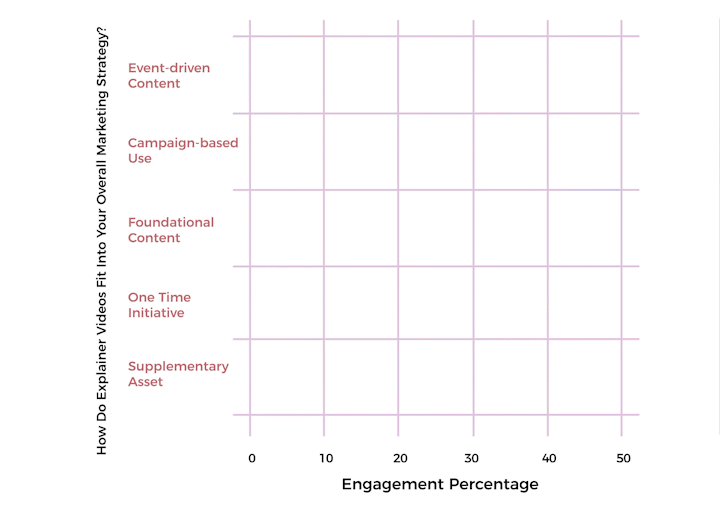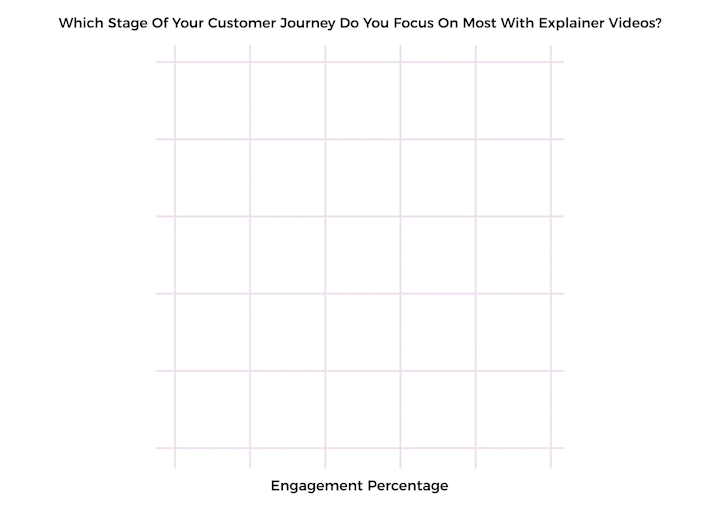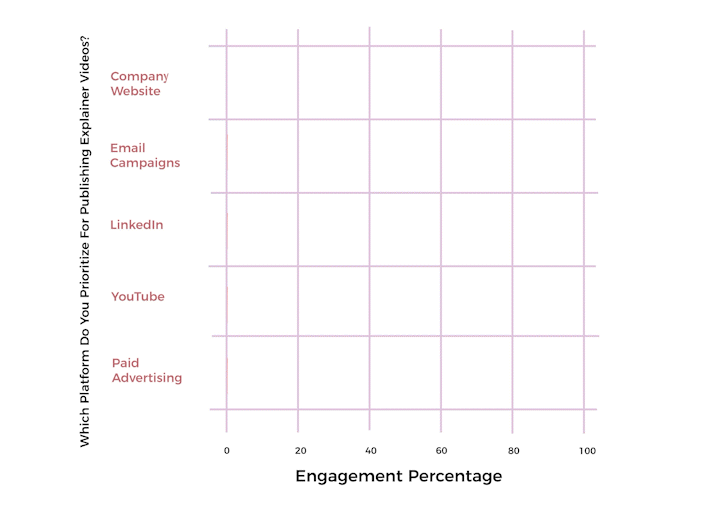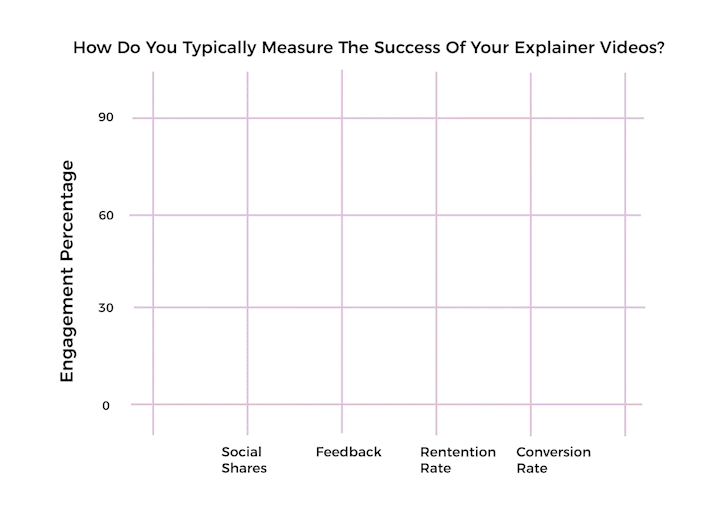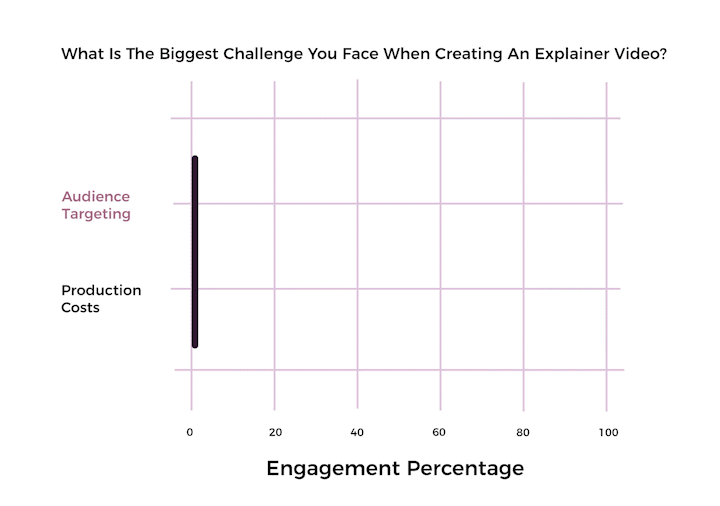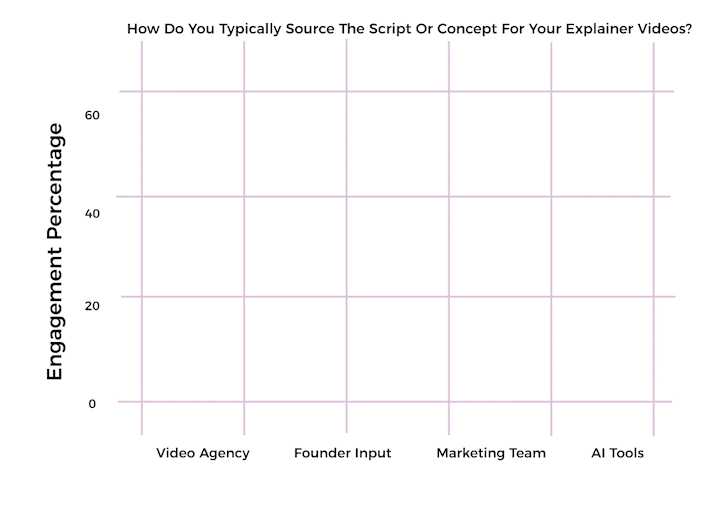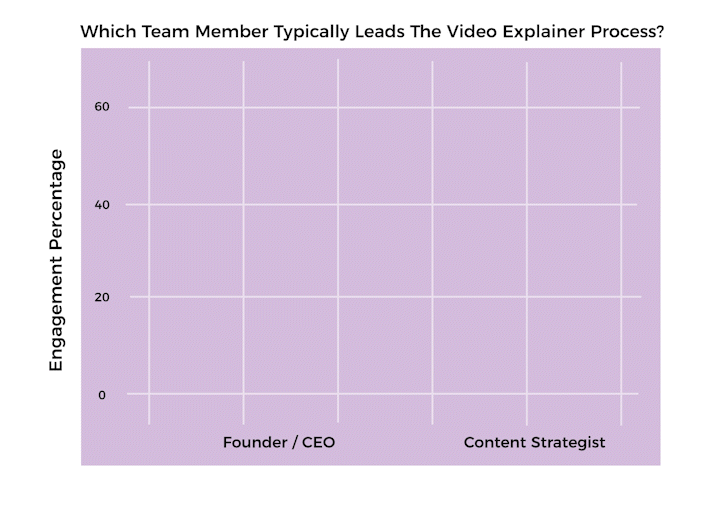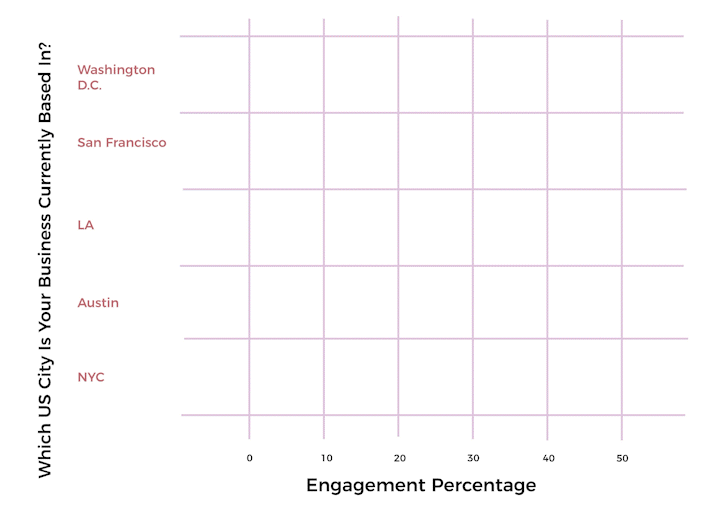Explainer Video Statistics: USA 2025 | Add A Little Pinch
Explainer Video Statistics: 2025
Explainer videos have become a staple in today’s marketing playbook. They’re part product intro, part brand statement, and the clearest way to bring a complex idea to life. Whether they’re used to drive awareness, distill a complex topic, onboard users, or clarify positioning, these videos are now a common tool for communicating with speed and intent.
To understand the role explainer videos play in early-stage business strategy, we used AI-driven audience profiling to synthesize insights from online discussions over 12 months, ending May 12, 2025, to a high statistical confidence level. This captured the views of 6,780 startup business leaders in the United States, offering a detailed and up-to-date perspective on how this format is being approached, prioritized, and put to work.
Index
- 38% of US startup business leaders use explainer videos to build brand awareness
- For 48%, explainer videos fit best into overall marketing strategies as event-driven content
- 100% of startup business leaders focus on retention in explainer videos
- 42% of startup business leaders say whiteboard animation best resonates with audiences
- 91% of startup business leaders prioritize company websites for explainer videos
- 85% of startup business leaders measure explainer videos’ success by social shares
- Startup business leaders equally prioritize viewer engagement and story clarity in explainer video planning phases
- 94% of startup business leaders struggle with explainer video audience targeting
- 70% of startup business leaders source scripts and concepts from video agency partners
- 100% of startup business leaders say their internal team’s primary role in video production is review and feedback
- Founders or CEOs lead the explainer video process according to 54% of startup business leaders
- % of US startup businesses are based in Washington, D.C.
- Methodology
What Is Your Primary Goal When Using A Video Explainer?
38% of US startup business leaders use explainer videos to build brand awareness
The primary goal behind using an explainer video often depends on where a startup is in its growth journey, but some objectives clearly stand out:
Identifying the primary goal for an explainer video often comes down to what a business needs most at a specific time. For 38% of startup business leaders, the focus is on brand awareness, using explainer videos to introduce their identity, values, and product in a compelling, visual format. That aligns with broader industry trends. According to HubSpot’s Video Marketing Playbook, 87% of marketers agree that video is an effective tool for increasing brand awareness.
Not far behind, 36% of startups prioritize lead generation, seeing explainer videos as a way to convert interest into action. Meanwhile, 26% use them to support customer onboarding, helping new users understand their product quickly and clearly.
The different use cases highlight how versatile explainer videos are and how startups prioritize their use based on what matters most at the moment.
How Do Explainer Videos Fit Into Your Overall Marketing Strategy?
For 48%, explainer videos fit best into overall marketing strategies as event-driven content
Explainer videos aren’t limited to one format or function, and how they’re used says a lot about broader marketing goals:
Explainer videos play a huge role in the overall marketing strategy of most startups. Given that 91% of people have watched an explainer video to learn more about a product or service, they’ve become an integral part of the marketing toolkit for engaging and educating audiences.
For 41% of startup leaders, explainer videos are used as event-driven content, likely launched alongside funding rounds, product announcements, or major campaign pushes. These videos are often time-sensitive, high-impact tools designed to grab attention and communicate value quickly.
Close behind, 40% take a more sustained approach, using explainer videos in customer-based applications such as onboarding sequences, feature walk-throughs, or support flows. These placements help reduce friction and improve user understanding over time.
17% say their explainer videos serve a functional role, often embedded on websites or landing pages to support conversion. Rounding out the list, only 1% see them as a one-time initiative, and less than 1% treat them as a supplementary asset, highlighting how rarely explainer videos are treated as throwaway content.
Which Stage Of Your Customer Journey Do You Focus On Most With Explainer Videos?
100% of startup business leaders focus on retention in explainer videos
Among all the stages in the customer journey, one takes priority above all others in how explainer videos are used:
The stage of the customer journey that startups focus on most with explainer videos is retention, and in this case, that focus is unanimous. All 6,780 startup business leaders in our audience prioritize retention, highlighting how important it is not just to attract new users but to keep them engaged, informed, and confident in their choice post-conversion.
The stage of the customer journey that startups focus on most with explainer videos is retention, and in this case, that focus is unanimous. All 6,780 startup business leaders in our audience prioritize retention, highlighting how important it is not just to attract new users but to keep them engaged, informed, and confident in their choice post-conversion.
It’s a strategy that makes sense. Explainer videos of sixty seconds in length have been shown to generate the highest customer retention rates compared with other forms of content. They’re fast, clear, and easy to integrate into onboarding sequences, product updates, or support touchpoints. All of that helps reinforce value and reduce churn.
Which Format Do You Believe Resonates Best With Your Audience?
42% of startup business leaders say whiteboard animation best resonates with audiences
Startups are exploring a range of video formats to find the ones that deliver the strongest connection with their audience:
Choosing the right format is a key part of creating content that resonates best with your audience. 42% of startup business leaders say whiteboard animation delivers the most impact. That preference aligns with recent findings on the power of animation in marketing, and how it can evoke heightened emotional engagement, improve brand image, and amplify social media sharing.
Live-action video follows at 33%, favored for its authenticity and ability to humanize a brand through real people and settings. Interactive video, chosen by 25%, offers a more immersive, hands-on experience, especially useful for demos, training, or personalized product journeys.
Which Platform Do You Prioritize For Publishing Explainer Videos?
91% of startup business leaders prioritize company websites for explainer videos
Publishing strategies for explainer videos differ across startups, with several platforms in the mix:
Choosing which platform to prioritize when publishing explainer videos is often tied to where a business sees the most direct impact. For 91% of US startup business leaders, that means focusing on their company website, a move that puts the content front and center in the user journey, often just a click away from product pages, sign-up flows, or conversion tools.
It’s a strategy supported by broader marketing data. 82% of businesses say video marketing has helped them increase website traffic, reinforcing why so many startups are choosing to keep their video content close to home.
Other platforms see far less emphasis. Just 3% prioritize email campaigns, where space and format can limit video performance. LinkedIn and YouTube each attract 2%. They’re helpful for visibility, but not always tied directly to conversion. At just under 2%, paid advertising sees the lowest focus, suggesting that most startups see greater long-term value in building owned traffic rather than paying for short-term views.
How Do You Typically Measure The Success Of Your Explainer Videos?
85% of startup business leaders measure explainer videos’ success by social shares
Plenty of metrics can be used to define success, but one is the clear frontrunner:
Measuring the success of explainer videos often depends on what feels easiest to track. For most startup teams, that means focusing on social shares, with 85% of business leaders in our audience pointing to that as their top success metric. It’s understandable. Shares are visible, immediate, and offer a quick signal that something’s working. But reach isn’t the same as impact.
12% focused on feedback and reviews, which shows some are paying attention to how their videos are actually received. That kind of response can offer a useful check on tone, clarity, and whether the story is landing with the right audience.
What’s really surprising is how rarely long-term performance enters the conversation. Retention came up for just 2%, even though acquiring a new customer can cost five to ten times more than keeping an existing one. That’s a huge gap. Explainer videos are built for exactly this kind of ongoing value: helping users get started, rediscover features, or stay engaged when interest drops off.
Then there’s conversion, which is arguably the clearest indicator that a video is doing its job. Yet fewer than 1% of startup business leaders use it as a success measure. For a format designed to drive action, that’s a curious blind spot.
What Do You Prioritize Most During The Planning Phase Of A Video?
Startup business leaders equally prioritize viewer engagement and story clarity in explainer video planning phases
Planning an explainer video often means juggling competing goals, and two priorities share the spotlight:
Planning an explainer video often means juggling competing goals, and two priorities share the spotlight:
What teams focus on during the planning phase says a lot about what they want the video to achieve.
In our audience, it’s a dead heat between two priorities. Viewer engagement and story clarity are
each named by 50% of startup business leaders.
What teams focus on during the planning phase says a lot about what they want the video to achieve. In our audience, it’s a dead heat between two priorities. Viewer engagement and story clarity are each named by 50% of startup business leaders.
Engagement speaks to the need for an emotional pull that grabs attention early, holds it through the message, and ideally leaves the viewer wanting more. For many startups, this is critical. Explainer videos are often the first impression, and if a video fails to connect, it rarely gets a second chance.
But clarity is just as important. Startups frequently need to simplify something complex, whether a new product, an innovative workflow, or a category that doesn’t quite exist yet. That’s where sharp storytelling comes in, making sure the narrative is clean, focused, and doesn’t lose the thread. Prioritizing clarity reflects a deep understanding that even the most engaging video won’t deliver if the story gets lost.
What Is The Biggest Challenge You Face When Creating An Explainer Video?
94% of startup business leaders struggle with explainer video audience targeting
Of all the things leaders battle with when creating an explainer video, one challenge consistently rises to the top:
Creating every explainer video begins with the challenge of how to shape a message that truly lands. And for most startup teams, that challenge comes down to audience clarity.
A full 94% of business leaders identified audience targeting as the most difficult part of creating an explainer video. It all comes down to figuring out exactly who the video needs to reach and how to make it resonate. It’s a familiar pain point in marketing more broadly. According to Nielsen’s 2022 Annual Marketing Report, global marketers ranked audience targeting as their most important tactic. It’s the part that determines whether a message sticks or slides past unnoticed.
By contrast, just 6% pointed to production costs as the biggest challenge. That gap says a lot. It suggests that most teams aren’t primarily worried about how much the video costs to make. They’re focused on whether it’s speaking to the right people.
How Do You Typically Source The Script Or Concept For Your Explainer Videos?
70% of startup business leaders source scripts and concepts from video agency partners
There’s no one-size-fits-all approach to scripting, but certain methods clearly dominate:
Sourcing the script or concept for an explainer video is where the creative direction takes shape, and for most startups, that job falls to external partners.
70% of business leaders turn to video agencies to help define the message, structure the story, and bring an outside perspective to what sometimes feels too close to home. That objectivity, combined with creative and strategic expertise, is a big part of what makes agency partnerships appealing.
Founder-led efforts and internal marketing teams each make up 14%. These approaches often reflect early-stage realities, like smaller teams, tighter budgets, and a desire to keep the message close to the core team. There’s merit in that approach, but it also comes with risk. When you’re too close to the product, it’s harder to see what needs simplifying.
Only 3% use AI-based tools to develop their video scripts or concepts. While AI is becoming more common in content workflows, most startups still seem to favor the clarity and nuance that come from human insight, whether that’s in-house or brought in from outside.
What Role Does Your Internal Team Play In Video Production?
100% of startup business leaders say their internal team’s primary role in video production is review and feedback
No matter who’s producing the video, there’s one point where the internal team always steps in:
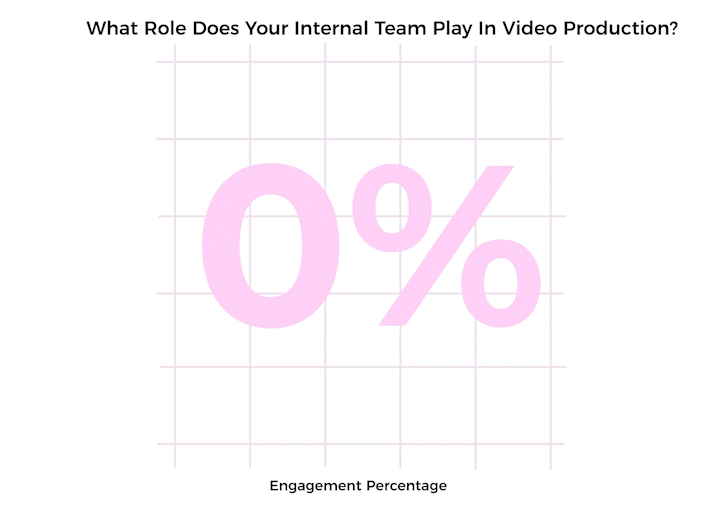
The role of the internal team in video production can vary widely depending on resources, workflow, and who’s leading the creative, but one thing doesn’t seem to change. All 6,780 startup business leaders in our data described their internal team’s role as focused on review and feedback.
Whether the video is produced by an outside partner or built in-house, that final layer of input is non-negotiable. It’s where accuracy gets confirmed, tone gets adjusted, and the message gets aligned with the company’s voice.
The role of the internal team in video production can vary widely depending on resources, workflow, and who’s leading the creative, but one thing doesn’t seem to change. All 6,780 startup business leaders in our data described their internal team’s role as focused on review and feedback. Whether the video is produced by an outside partner or built in-house, that final layer of input is non-negotiable. It’s where accuracy gets confirmed, tone gets adjusted, and the message gets aligned with the company’s voice.
Which Team Member Typically Leads The Video Explainer Process?
Founders or CEOs lead the explainer video process according to 54% of startup business leaders
Leadership in the explainer video process tends to fall to one of two voices, and each brings something different to the table:
The team member who leads the explainer video process often comes down to how important that video is to the business. For many startups, it’s the first real articulation of the product, the brand, and the reason the company exists. That’s why 54% of startup business leaders say the founder or CEO leads the process. When the stakes are that high, it’s not something to delegate lightly.
Explainer videos demand clarity and conviction, and in early-stage companies, no one holds that story more closely than the founder. There’s also been an increase in founder-led marketing in recent years, which likely impacts this result.
Still, 46% of startups say the process is typically led by a content strategist. That shift doesn’t diminish the video’s importance—if anything, it highlights it. Strategists bring structure and refinement, ensuring the message feels true and lands clearly with the intended audience.
Which US City Is Your Business Currently Based In?
47% of US startup businesses are based in Washington, D.C.
When it comes to setting up shop, some cities consistently attract more startups than others:
The city in which a business is based can influence everything from team structure to investor access. For our audience, two cities clearly lead the pack. Washington D.C. accounts for 47% of the startups in our data, with San Francisco just behind at 45%. While one is rooted in policy and has been making headlines recently for causing a start-up gold rush, the other is a long-standing tech hub for new businesses.
The rest are more thinly spread. Los Angeles is home to 5% of the businesses represented, while Austin comes in at 2%, and New York City at just 1%. These cities still have strong startup scenes, but for this group, the majority are choosing locations with deeper strategic or institutional ties.
All in all, the data shows how explainer videos have become a vital tool for startups wanting to communicate clearly, drive growth, and keep customers engaged throughout their journey. From initial planning and strategy to distribution and performance tracking, US business leaders are using these videos in more targeted and strategic ways. Yet, while the formats and use cases may vary, one challenge stands out across the board: effectively reaching the right audience with a message that truly resonates.
Methodology
Sourced using Artios from an independent sample of 6,780 USA startup business leaders’ opinions across X, Quora, Reddit, TikTok, and Threads. Responses are collected within a 95% confidence interval and a 4% margin of error. Engagement estimates how many people in the location are participating. Demographics are determined using multiple features while preserving privacy. Results are derived from opinions expressed online, not actual questions answered by people in the sample.
About the representative sample:
- 70% of startup business leaders in the USA are 45 years or older.
- 52% identify as female and 48% as male.
- 56% earn between $200,000 and $500,000 annually.
- 27% are in the Pacific and 21% are in the West South Central.
About Artios:
AI is choosing winners and losers in search. Artios money-back guarantees B2B companies and clients of fractional advisor clients are winners. Artios is founded by Andreas who built his first AI from scratch back when GPT2 was announced in 2020, making Artios highly prepared for AI search.
About Altitude B2B:
Altitude B2B is a fractional marketing firm that specializes in ethical, data-driven SEO to help professionals organically grow their business with confidence and credibility. Our team increases your visibility, credibility, and attracts qualified leads through transparent, sustainable, and results-oriented SEO strategies.
